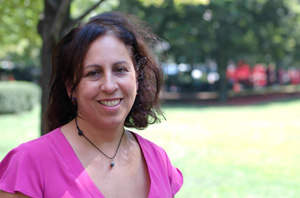
BMCC Associate English Professor Cheryl J. Fish returned to the U.S. this fall after spending the 2006-2007 academic year in Finland, and the educator says the experience made her a better teacher.
Fish taught and conducted research in the area of Environmental Justice and North American Studies at the University of Tampere on a grant from the U.S. Department of State and the J. William Fulbright Foreign Scholarship Board.
What is Environmental Justice?
“Environmental justice tries to look at how environmental hazards tend to be disproportionately in poor communities. It brings race and class into traditional environmentalism, like: who gets to use the water and how is it used?” Fish said. Another example, she said: “communities like Harlem and the South Bronx have disproportionate numbers of toxic wastes sites.”
Fish took those issues to the classroom, but tried to look at them in a different light.
“What I aimed to do is look at how literature and film deals with these issues and how writers and filmmakers are taking up environmental issues as they intersect social injustice and looking to make it better,” she said. “How do we make a message that is also appealing to people so that they don’t feel like this is just very painful, depressing material?”
One piece Fish used was “Blue Vinyl,” a 2002 documentary that uses comedy to attack the issue of how harmful America’s most popular plastic, polyvinyl chloride (PVC), is to our health and environment. Fish got a surprise, though: the Finnish don’t commonly use vinyl on their houses — they use wood and concrete. And the surprises didn’t stop there — when she assigned students to research environmentally related organizations, they began to bring in organizations she’d never heard of before.
“I learned a lot from the students,” she said. “I had students from 5 or 6 different countries in my class and that was very interesting. We learned a lot from each other.”
Fish and Cultural Diversity
She also observed a Finnish culture very different from the American culture. Fish used an example of something the Fins commonly do: pick wild berries, mushrooms and other things of the sort. “If someone owns a forest, anyone is allowed to walk on that forest and pick berries. The idea of private property is so important in our culture. It’s not as important there. Making a lot of money isn’t the first thing people talk about.”
Fish said the experience of trying hard to understand other cultures is something she’ll carry into her BMCC classes.
“BMCC students come from so many countries so I’ve always encouraged that perspective but now I think I respect it even more. I think I can relate a lot of students who come here from so many different places and have to adjust to our way of doing things. It makes me a better teacher. I’m more aware of the diversity of perspectives,” she said.
Fish was one of approximately 800 U.S. faculty and professionals who traveled abroad to some 150 countries through the program. Established in 1946 under legislation introduced by the late Sen. J. William Fulbright of Arkansas, the program’s purpose is to build mutual understanding between the people of the U.S. and other countries.

